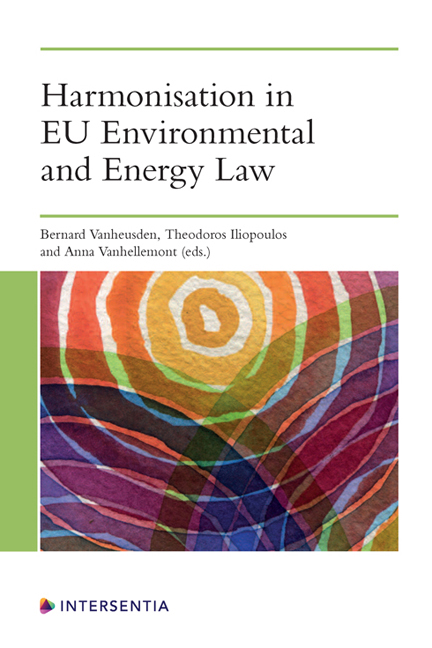Internal Harmonisation of Environmental Law: Learning from the Member States?
Published online by Cambridge University Press: 26 May 2022
Summary
INTRODUCTION
The concept of harmonisation covers various meanings. A very broad and general definition would be that harmonisation consists of the bringing together of legal ideas to allow a functioning in unison. In the context of the European Union, harmonisation is mostly used in the sense of approximation of laws between different legal systems (i.e. external harmonisation). However, it can also be understood as harmonisation within one legal system or one branch of law. A definition for this so-called internal harmonisation could be:
Internal harmonisation is the legal process in which incoherencies within one legal system are resolved in a coordinated and integrated manner.
In this chapter, we will scrutinise the idea of internal harmonisation of environmental law in three Member States, namely, the Netherlands, Belgium (Flemish region) and France. Of course, the inclusion of experiences in all Member States would be very useful in order to determine best practices of harmonising environmental legislation. However, this would not be feasible in the context of this chapter and shall be the topic of further research.
In the second section, we will scrutinise the development of environmental legislation in each Member State. We will take a look at the evolution and existing environmental legislation before any harmonising steps had been taken, the reasons and motives for harmonisation, the starting point and following process and the current state of environmental legislation. Following this, in section three, we will partially conduct the same exercise at the EU level. A clear overview of the national reasons, processes and instruments will be useful, as we can consider whether these motives are similar to the ones identified at the EU level, and how the legal process may be transposed to this supranational level. Finally, some concluding remarks will be made on the possibility of further harmonising EU environmental legislation.
The main research question throughout this contribution is: can the EU learn from legal processes of environmental internal harmonisation in the Member States?
HARMONISATION OF ENVIRONMENTAL LEGISLATION IN THE MEMBER STATES
At the national level, we can observe several initiatives to internally harmonise environmental legislation. Across the EU, environmental codes and general environmental acts have been adopted in the different Member States.
- Type
- Chapter
- Information
- Harmonisation in EU Environmental and Energy Law , pp. 85 - 100Publisher: IntersentiaPrint publication year: 2022



